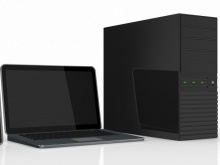'ZDNET Recommends': What exactly does it mean?
ZDNET's recommendations are based on many hours of testing, research, and comparison shopping. We gather data from the best available sources, including vendor and retailer listings as well as other relevant and independent reviews sites. And we pore over customer reviews to find out what matters to real people who already own and use the products and services we’re assessing.
When you click through from our site to a retailer and buy a product or service, we may earn affiliate commissions. This helps support our work, but does not affect what we cover or how, and it does not affect the price you pay. Neither ZDNET nor the author are compensated for these independent reviews. Indeed, we follow strict guidelines that ensure our editorial content is never influenced by advertisers.
ZDNET's editorial team writes on behalf of you, our reader. Our goal is to deliver the most accurate information and the most knowledgeable advice possible in order to help you make smarter buying decisions on tech gear and a wide array of products and services. Our editors thoroughly review and fact-check every article to ensure that our content meets the highest standards. If we have made an error or published misleading information, we will correct or clarify the article. If you see inaccuracies in our content, please report the mistake via this form.
Archos Ondio


Archos Ondio
pros and cons
- Editors' review
- Specs
Design
A study in stylish minimalism, the Ondio's blue-and-silver fascia sports just an LCD, a four-way navigation pad for controlling most playback functions and a Mode button that accesses most of the player's settings. Although it's plastic, the Ondio can withstand a fair amount of abuse. At 81mm by 47mm by 25mm, the 60g device is small enough to fit in your palm and light enough to be unobtrusive when carried in a pocket or on your belt in its padded neoprene case (with Velcro strap). Holes in the case give access to the controls and eight-line LCD, but you'll have to remove the unit if you want to use the internal microphone for voice recording. We do have one gripe about the Ondio's LCD: although it's large and includes a few graphical elements, it lacks backlighting, which makes it impossible to operate in the dark.
The Ondio is a mostly rectangular affair except for a circular indentation on its lower-right side that houses an extra MultiMedia Memory card, allowing you to expand the player's on-board 128MB capacity. However, we should note that you can listen to either the songs on the on-board memory or the card -- not both. If you want to hear the songs stored on the device itself, you'll need to remove the card. A USB port on the unit's right-hand side is vulnerable to damage when the device is without its case, but this is fairly normal.
Like most earbuds, the ones included with the Ondio are nothing to write home about, but they do have an attached, in-line volume control. A full-function remote would have been nice, but most flash-based players lack this feature.
Features
The Ondio's most noteworthy feature is its ability to record VBR MP3s from line-level sources independently of a computer, at average bit rates of 78Kbps to 166Kbps. To do so, you simply connect one end of the included RCA-to-1/8in. cable to the Ondio's line-in jack and hook the other end to any standard analogue stereo output found on cassette decks, mixing boards or almost any other audio component. Powered microphones work, too. Once the cable is connected, navigate to the Ondio's Recorder section and double-click the power button to start recording. When the tune is over, double-click the Mode button to stop; your MP3 will appear in the Ondio's file tree. Significantly, this device lets you adjust the gain of the incoming audio, so you can record a strong, clean signal without worrying about running out of headroom or adding harsh digital distortion to your recordings. Better yet, you can add the recorded MP3 to your desktop music archive the next time you sync up. Creative Labs' Jukebox 3 lacks this feature.
Like the iRiver iFP-180T, the Ondio records music straight from its built-in FM radio, which sports a hefty 30 presets. But the Ondio improves on iRiver's design by including a Retro Record feature, which can be activated in the Settings menu. When Retro Record is on, the Ondio adds to the recording the 30 seconds of FM radio that played before you double-clicked the power button to commence recording. What's so cool about this? Well, if you miss recording the beginning of a song by less than 30 seconds, Retro Record solves the problem -- quite impressive. You can also trim away any unwanted audio at the beginning or end of your new MP3 from within the device -- again, no computer required. However, the editing process is somewhat tricky, and you'll need a few practice runs in order to perfect it.
Aside from its robust recording capability, the Ondio also does a fine job playing MP3s and playlists, although it does not support the WMA format. A healthy number of playback customisation options are available, so you can individually tweak levels for bass, treble, loudness and bass boost on a scale of 1 to 10. You'll also find the usual random and repeat modes, a hold feature and a power-save mode that shuts down the Ondio after one minute of pause. The Ondio allows you to delete or rename files on the go and choose among six languages (English, French, German, Spanish, Italian, and Dutch).
Like certain other portable players, the Ondio stores data files, so you can port documents from one computer to another. It innovates in this area, too, by allowing you to read TXT files on its LCD, something we haven't seen before. The screen is too small for lengthy texts, but the feature is fine for checking a grocery list or an address.
The Ondio connects to your PC or Mac via USB 1.1. Archos supplies the rather short USB cable. Otherwise, getting music on the device is simple: since the Ondio shows up as a drive in Windows Explorer, you can simply drag and drop files to it. A full copy of MusicMatch Plus is included for ripping and encoding MP3s at maximum speed.